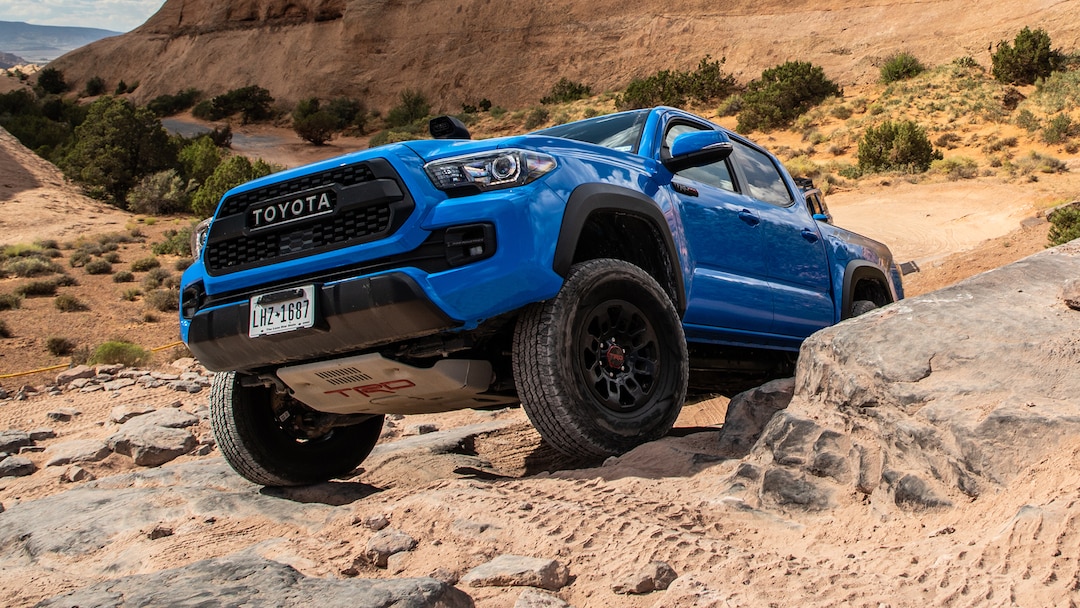Toyota is building trucks and SUVs as fast as it can to meet the surprisingly strong consumer demand for new vehicles. The Japanese automaker is adjusting where it can, such as cancelling rental orders to use its reduced capacity for retail customers, said Bob Carter, Executive Vice President of Automotive Operations.
The nine new or refreshed vehicles planned for this year are set to proceed, confirmed Carter. The new Toyota Sienna hybrid minivan made its debut online, as did the Toyota Venza, a two-row hybrid crossover. The global virtual unveiling of the Lexus IS sedan is also scheduled, highlighting the diverse lineup in the works from Toyota and Lexus moving forward.
All Plants Back At Work
Wait, isn’t everything smooth sailing? Not exactly. The new Toyota Highlander got caught in the pandemic shutdowns. “We are in the midst of ramping up the new Highlander,” Carter stated. “We sold the old model down earlier than anticipated, and the COVID-19 disruption delayed our ramp-up at the Indiana plant.” The Highlander situation exemplifies broader challenges across the industry.
Toyota resumed manufacturing on May 11; however, new COVID-19 safety protocols prevent plants, especially in Mexico, from operating at full capacity. Workers complete health questionnaires, undergo temperature checks, and maintain social distancing to ensure safety.
In the six weeks since resuming production, there have been some cases of infection; these appear to stem from community spread, rather than work-related incidents. Although there have been pauses in production, no major shutdowns have occurred, and Chief Administrative Officer Chris Reynolds expresses hope that as restrictions ease, Toyota will meet rising demand in the upcoming months.
Best Sales Weekend
On the sales front, Toyota recently recorded its best weekend since the pandemic began. Despite some challenges, the market’s recovery has been quicker than anticipated. Retail sales are running at 85% compared to last year, and it appears this level may hold steady for the next few months, though supply chain issues may result in “lumpy sales” during this period.
Subsequent supply restrictions will likely affect the entire industry throughout June and July, creating an inventory imbalance. “I anticipate sales will plateau here until our supply chain allows for increased inventory,” Carter added.

The automotive market has seen an interesting trajectory. After a steady start in March, the sales pace faltered due to the pandemic, hitting a low of an 8.6 million rate in April. Unexpectedly, May witnessed a surge to 12.2 million, with sales maintaining this rate into June. Overall, Toyota has revised its projected U.S. sales for 2020 to 13.6 million from the original forecast of 16.8 million.

We Need More Trucks
Even prior to the pandemic, pickup trucks and SUVs accounted for 70% of total vehicle sales. This trend continues, resulting in a shortage of Tacoma and Tundra pickups. “I’m urging Chris to build as many trucks as possible. If it has four wheels, build it,” Carter commented.
Demand for the Tacoma is particularly strong, which is evident in the recent limited-time incentives. The Tacoma is produced across multiple facilities in Mexico, California, and Texas, each affected by varying government regulations that have impacted output. Fortunately, Toyota’s plants in Mexico are now operating with staggered shifts, allowing for improved production flow.
Despite low gas prices, hybrid sales are up 3.5%, driven primarily by the RAV4 Hybrid and the Highlander. Carter notes that the introduction of performance-oriented hybrids has proved effective in attracting buyers.
Although incentives for luxury vehicles have spiked, reaching as high as $10,000, these offers are beginning to taper off. Toyota’s financing offers remain competitive and promote hybrid options, many featuring zero percent financing.
Pent-Up and New Demand
There is indeed pent-up demand, complemented by a wave of new consumer interest. Nearly all 1,500 Toyota dealers are currently open for business, requiring appointments for sales. Notably, in urban areas like New York City, first-time buyers are emerging, likely due to growing discomfort with public transportation.
A surge of inquiries is evident, averaging 4,000 requests per day, compared to 2,600 daily inquiries in June 2019, signaling evolving consumer behavior. Lease returns are also increasing, with Toyota redistributing vehicles from areas with weaker sales to those in greater need, such as Florida and Texas. The sale of these off-lease vehicles is pacing 40% ahead of Toyota’s original projections for June, with most transactions occurring online.
Fleet Orders Cancelled
Conversely, commercial and fleet sales remain sluggish, currently at 15-20% of normal levels, and account for roughly 20% of total sales. In a bid to optimize production, Toyota has cancelled various orders for basic-spec vehicles intended for rental companies, reallocating resources to retail-spec vehicles instead.
Meanwhile, non-manufacturing employees are set to continue working from home until September 1. Although cautious about transitioning to remote operations, Carter notes that efficiency has not suffered. In fact, some areas, particularly customer service, have demonstrated improved performance compared to traditional office settings.




